Mushrooms have immense environmental significance. They make nutrients available to plants, and help decompose dead plants and animals. They’re also, of course, nutritious for humans to eat — with care about which ones are deadly, which are poisonous, which are psychedelic, and which are simply delicious, of course. Humans have sought out wild mushrooms for millennia. It’s perhaps no surprise, then, that a modern subculture has evolved around mushroom foraging. According to Larry Lonik, the author of Basically Morels: Mushroom Hunting, Cooking, Lore & Advice, about 50 million people worldwide hunt for morels (an edible mushroom found in the Northern Hemisphere) every year. There are more than 90 mushroom clubs, groups, and organizations associated with the North American Mycological Association in the United States alone.


Mycologists Explain the Most Exciting Mushrooms to Forage in Each Region of the United States
The ecological importance of mushrooms simply can’t be overstated.
“Most trees could not survive without the underground fungi that help sustain and feed the root systems,” David Babik, president of the Boston Mycological Club, tells me. “While we’re just beginning to understand the interrelated connection between plants, trees, and fungal networks, fungi also decompose fallen trees and help them break down to become soil and compost.”
Mushrooms – or rather, the network of mycelium beneath the mushroom itself – are the “great social security net for the forest,” Dr. Gordon A. Walker says in the new Matador Network documentary “Mushrooms Are Hot Right Now.” “[The trees] are all connected to this network. So young trees, old sick trees, everybody has access to this sugar … really making the forest function as a whole organism.”
Indeed, Walker believes “fungi will be our best friends in trying to re-terraform our planet and make sure it’s still liveable for future generations.” And it’s more than just food. Research is showing how sustainable and quickly growing mushrooms can be used to create faux leather and other textiles.
Mushroom foraging, then, isn’t just plucking some cool-looking fungus from the ground that can maybe be cooked and eaten later. It’s like unearthing the building blocks of the ecosystem itself.
Unsurprisingly, the types of mushrooms you’ll find in each region vary dramatically based on the climate and other factors. The Northeast and the Pacific Northwest are prime foraging regions due to high summer and fall rainfall, Babik says, while high-elevation fungi thrive in Colorado, Washington, Oregon, and the Northeast. Less acidic soils in the plains helps lead to plenty of morels in the spring.
There are a couple of key things to keep in mind when foraging for mushrooms, according to Sebastian Tabibi, president of the North Texas Mycological Association. First, take photos of both the top and underside of the mushroom for proper identification. Don’t eat any mushrooms that can’t be confirmed by multiple reputable sources (a single app isn’t going to cut it), and knowing how to identify the common deadly mushrooms — particularly the Amanita species like destroying angels and death caps — is just as important as knowing the edible ones. Resources like iNaturalist can go a long way in helping to identify each species.
Mushrooms tend to appear in the same spots at the same time each year. Babik also advises learning about tree species to make mushroom hunting even easier.
“Hen of the woods is usually found with oak,” he says, “lion’s mane with beech, chaga (a prime medicinal mushroom) grows on birch, oyster mushrooms appear on maple, cauliflower fungi like red pine.”
The most exciting mushrooms found in each region of the United States
Understanding all that mushrooms can do is key to sustainability and preservation, but understanding is only part of it. The other part is getting out there in the woods, seeing mycelium for yourself, and experiencing firsthand what makes the world of mushrooms so beautiful and important. What, exactly, you’re able to find on your travels and in your own backyard can vary widely depending on what part of the country you’re in. One thing is for certain, though: No matter where you live in the US, there’s a fascinating mushroom to be found.
Pacific Northwest
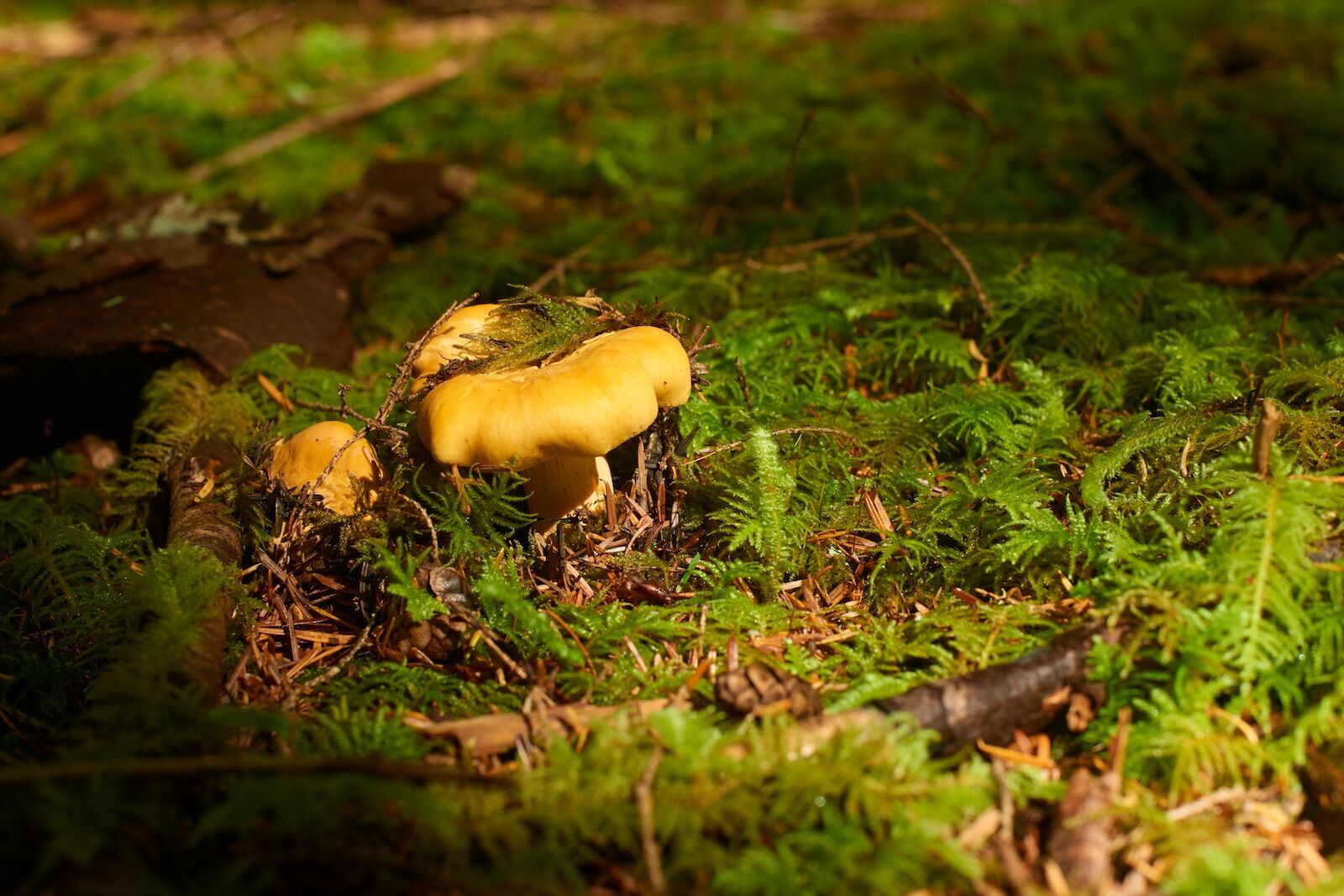
Photo: thecolorpixels.com/Shutterstock
Mushroom season in the Pacific Northwest runs from early spring until late fall, with many found in the region’s abundant forests. Since it rains here much more frequently than it snows, the climate is ideal for mushroom foraging, as mushrooms love the rain. Mushrooms are also found year-round along the coast, due to how much rainfall coastal areas receive.
According to Babik, some of the most exciting mushrooms in the Pacific Northwest include chanterelles, known for their apricot aroma, and morels. He also notes matsutake and lobster mushrooms as regional favorites.
West Coast
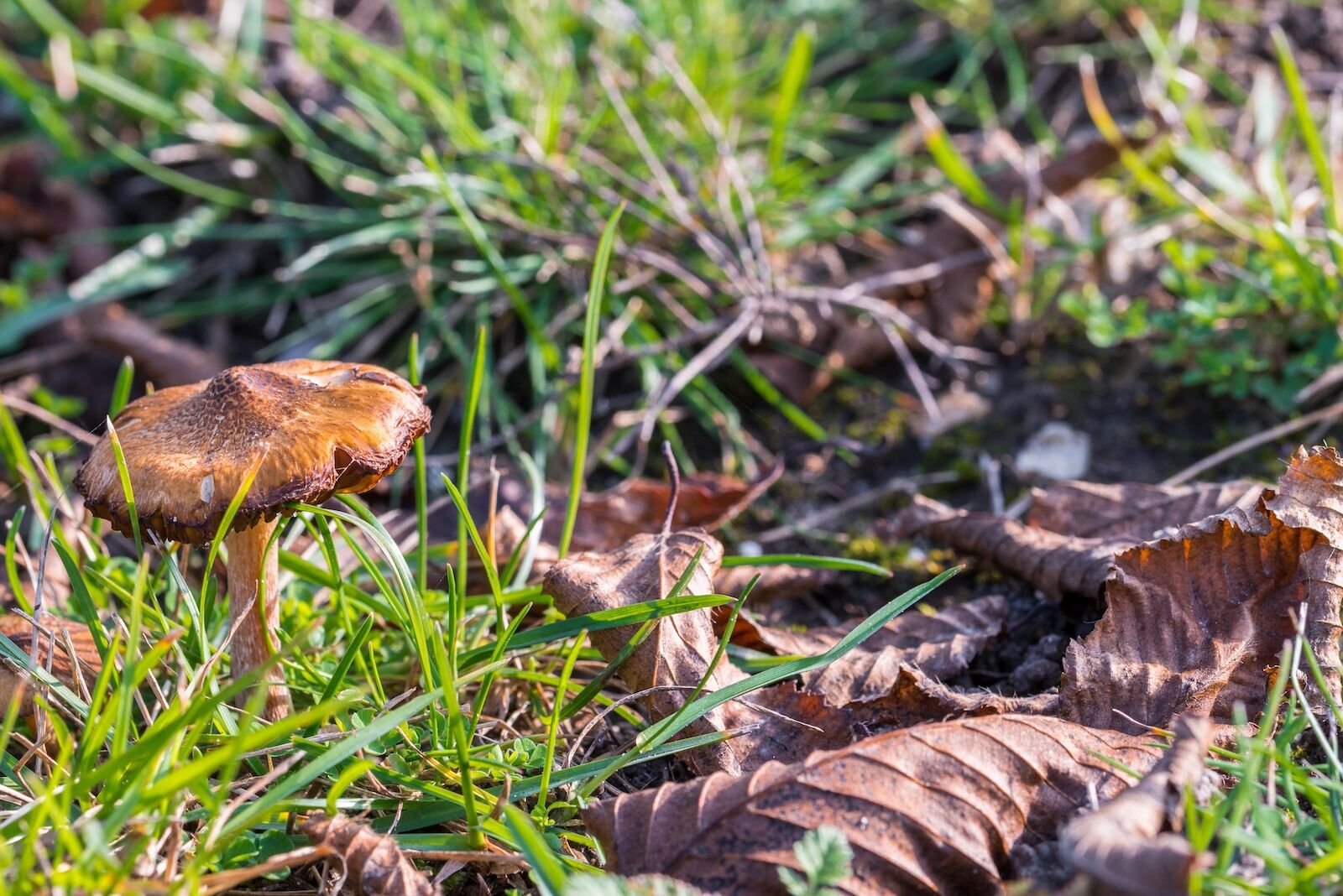
Photo: StGrafix/Shutterstock
“California has such a diverse geography that you really can forage all throughout the year so long as you’re willing to drive the miles,” Brennan Wenck-Reilly, of the Mycological Society of San Francisco, tells me. “There is such a huge diversity of mushrooms as well.”
Wenck-Reilly notes that chanterelles, porcini, oyster mushrooms, morels, and spring porcini are found in the state. Candy caps are a favorite for their “essences of maple syrup,” and prince mushrooms for their strong almond paste smell.
If you’re going mushroom foraging in California, Wenck-Reilly advises knowing the local regulations and restrictions. “Many of the regulations are in place to mitigate erosion and trampling of local flora,” he says. “Bring a map, or some sort of device to help you in case you get lost.”
Southwest
Due to the dry climate, mushroom foraging in the Southwest can be unpredictable. It depends on how much rain the region has gotten, and whether you’re foraging in a desert or mountain environment. Mushroom foragers do their searching in forested mountains, along riverbeds and creek bottoms, and in cottonwood washes. There is a benefit to the dry climate: the fungi here aren’t likely to be as infested with bugs as they are in other parts of the country.
Among many others, the Southwest is home to oyster mushrooms, turkey tail (which, aesthetically, certainly live up to their name), velvet foot enoki, and birch polypore. From Arizona to the southwestern parts of Texas, it’s best to follow the rain.
“We don’t have quite the abundance and diversity as most regions of the country, which ties directly to our bio-region’s tree and plant diversity and climate,” Angel Schatz of the Central Texas Mycological Society tells Matador Network. “However, when we get rain, you will find mushrooms. Rain and timing is key when foraging for mushrooms. Sometimes you have just a few days to catch a mushroom when it is ready to be harvested.”
Schatz draws attention to chicken of the woods, which grows abundantly on Texas live oaks. “We host an annual foraging bike ride, the Myco Cyco, every year to look for them,” Schatz adds.
Rocky Mountains
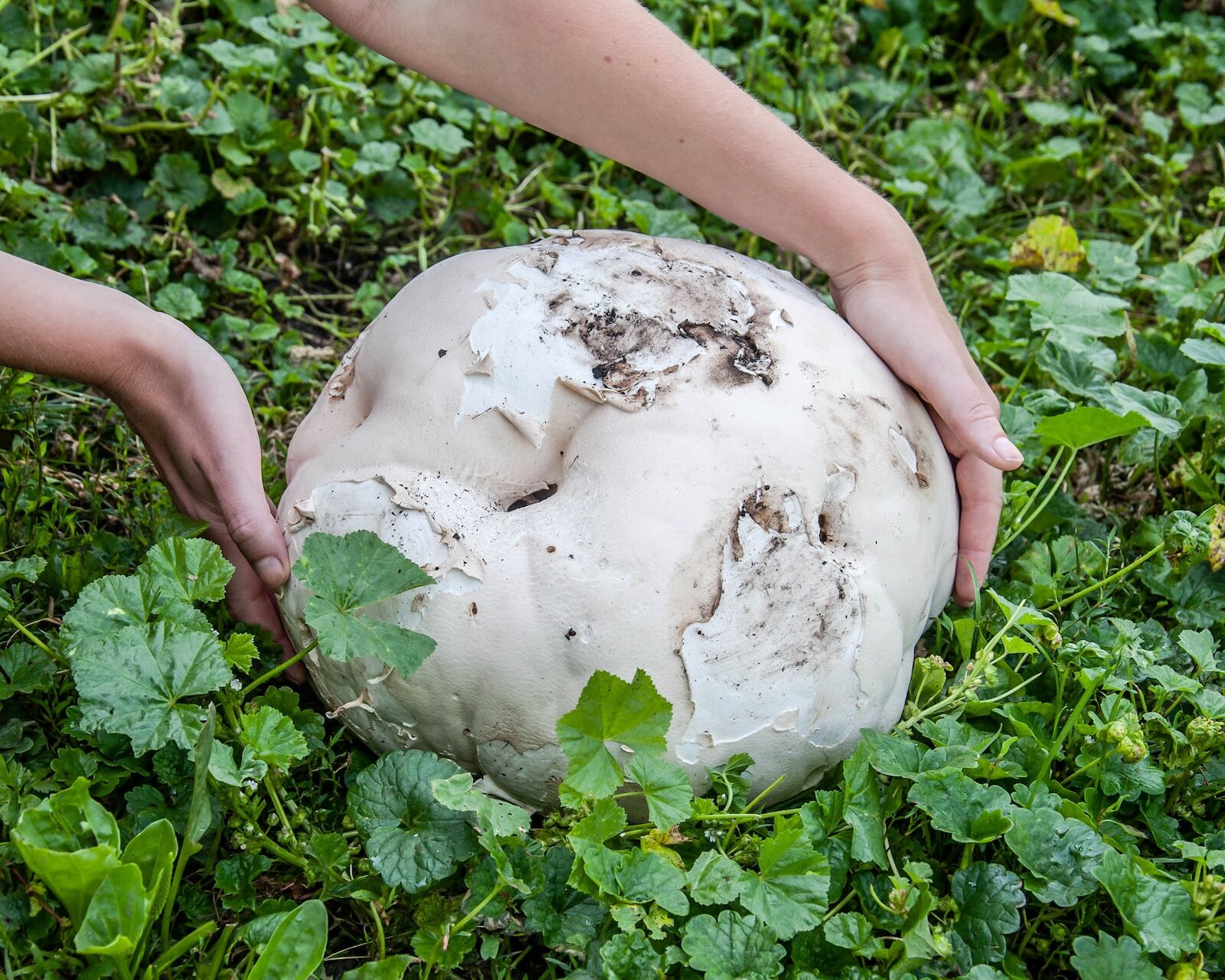
Photo: klerik78/Shutterstock
Rocky Mountain mushroom foragers await the rains with as much anxious expectation as foragers do in the Southwest. The Rocky Mountains are often hot and dry in the summers after the winter snows, with varying rain volume year-to-year. Peak season for high elevation mushrooms in the Rocky Mountains is late summer to early fall.
Babik’s favorite mushrooms in the region are clustered blue chanterelles, but there are plenty of others to be found as well. According to Modern Forager, the Colorado “Fab Five” include porcini, chanterelle, hawk’s wing, delicious milky cap, and puff ball.
Farther north in the Rocky Mountains region, Montana’s wild mushroom habitats are plentiful.
“There’s a good variety of mushroom hunting options in our area,” Larry Evans of the Western Montana Mycological Association says. “Matsutake, chanterelles, puffballs, lobsters, oysters, and several less famous species turn up regularly.”
Like many other regions in the country, Montana is also all about the morels.
“Morels are the big news mushroom in Montana, where we chase them in the burn zones (recently burned forests),” Evans says.”
Midwest and Plains

Photo: 365 Focus Photography/Shutterstock
Mushroom season in the Midwest, particularly the upper Midwest, is comparatively short, running just a month or so from late April to early June. This short window is due to the dryness of summer and the harsh winter conditions, neither of which are ideal for mushroom growth. Popular Midwestern mushrooms include chicken of the woods, dryad’s saddle (one of the biggest mushrooms in the region), wood ear mushrooms, mica caps, and the perennial favorite, morels. The Midwest is one of the best regions in the country for finding an abundance of morels – if you can hunt them down during the short seasonal window.
In the plains of north Texas, morels are elusive and can be found for two-to-three weeks toward the end of March, Tabibi says. North Texas mushroom foragers can also find chanterelles, oyster mushrooms, lion’s mane, turkey tails, and reishi. But the most exciting mushroom found in the parts of Texas not defined by desert is the Texas star. “It’s a saprophytic fungus,” Tabibi says, “meaning it decomposes dead organic matter, specifically Cedar Elm stumps, and is only found in Texas and Japan. Our Texas star is triggered by the colder weather, only appearing from late November toward the end of February.”
The North Texas Mycological Association has a regional iNaturalist project to help identify local species, and hosts events like Texas Mushroom Festival happening May 17 through 19 in 2024.
New England

Photo: john paul slinger/Shutterstock
With wet springs, humid summers, unpredictable falls, and a generally temperate climate, the time between April and November is ideal for mushroom foraging in New England. Foragers should search around dense forests, particularly near rivers or streams where moisture levels are higher.
“Most edible mushrooms are found in hardwood forests near trees like oaks, maples, and beeches,” Philip Delaney, an avid New England mushroom forager, tells me. “You can also find a ton by hiking up mountains with slopes offering well drained soil, as well as trails near forest edges after rainfall.”
He particularly enjoys foraging for chanterelles and chicken of the woods. “They’re really delicious, and have a distinct shape, form, and color (golden yellow for chanterelles, and yellow/orange for chicken of the woods), which makes them stand out,” he says. “It’s like finding gold in the forest!”
Appalachia
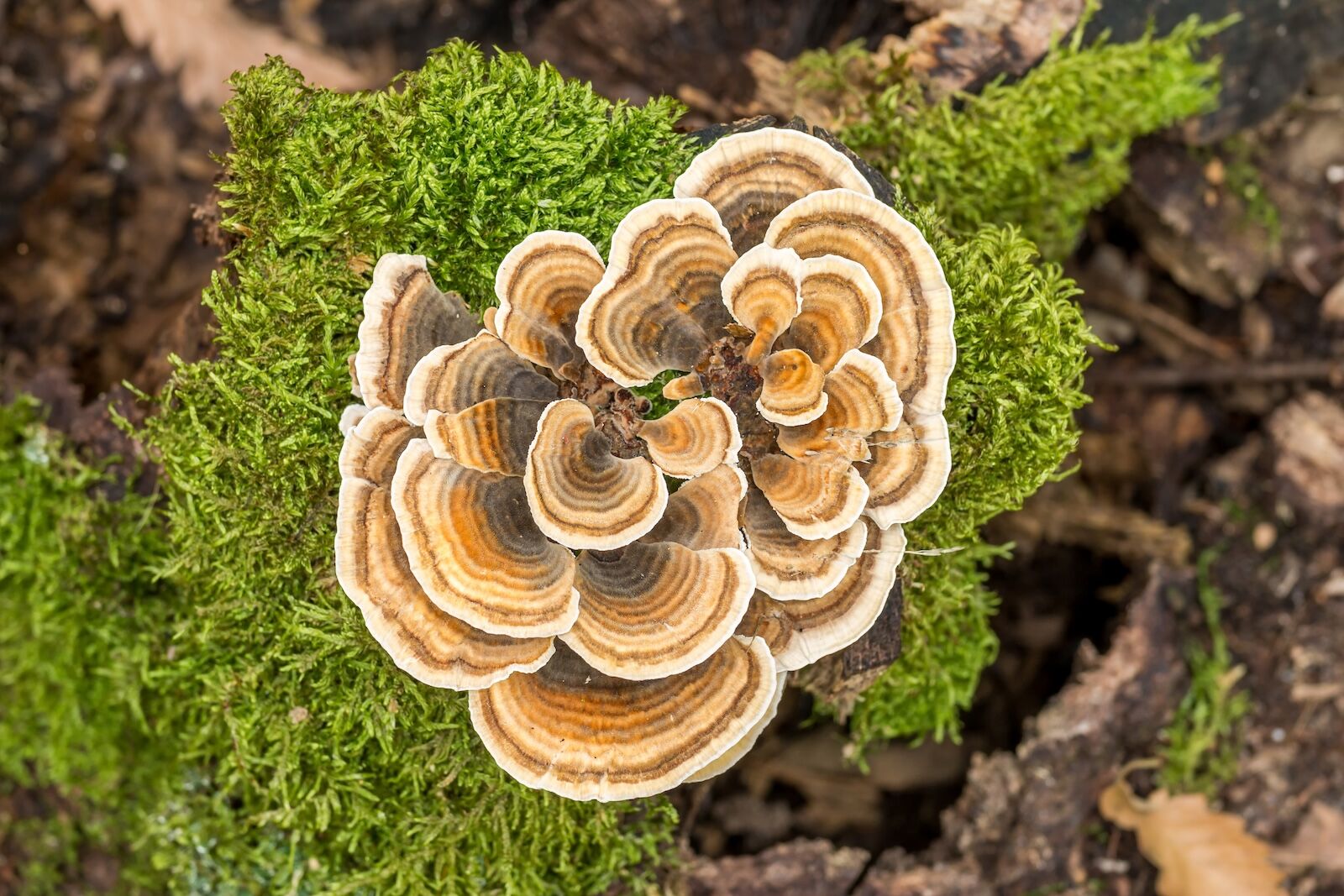
Photo: Digoarpi/Shutterstock
In the Appalachian Mountain region, summer and fall are the reigning mushroom hunting seasons. One of the most biodiverse parts of the country, Appalachia has a rainy climate, complex soils, and a variety of different topography, all of which make for a distinct foraging experience. Many of the region’s mushrooms can be found around oak trees, with nearly 60 different species of oak found in Appalachia.
Chicken of the woods, for example – one of the area’s most plentiful mushrooms – typically grows on the sides of large oaks. Turkey tails are another abundant regional mushroom, as well as indigo milk caps, black trumpets, and oyster mushrooms. Lion’s mane (which also grows on oak trunks) is one of the most highly-prized mushrooms found in the fall, as it’s believed to have medicinal benefits.
South
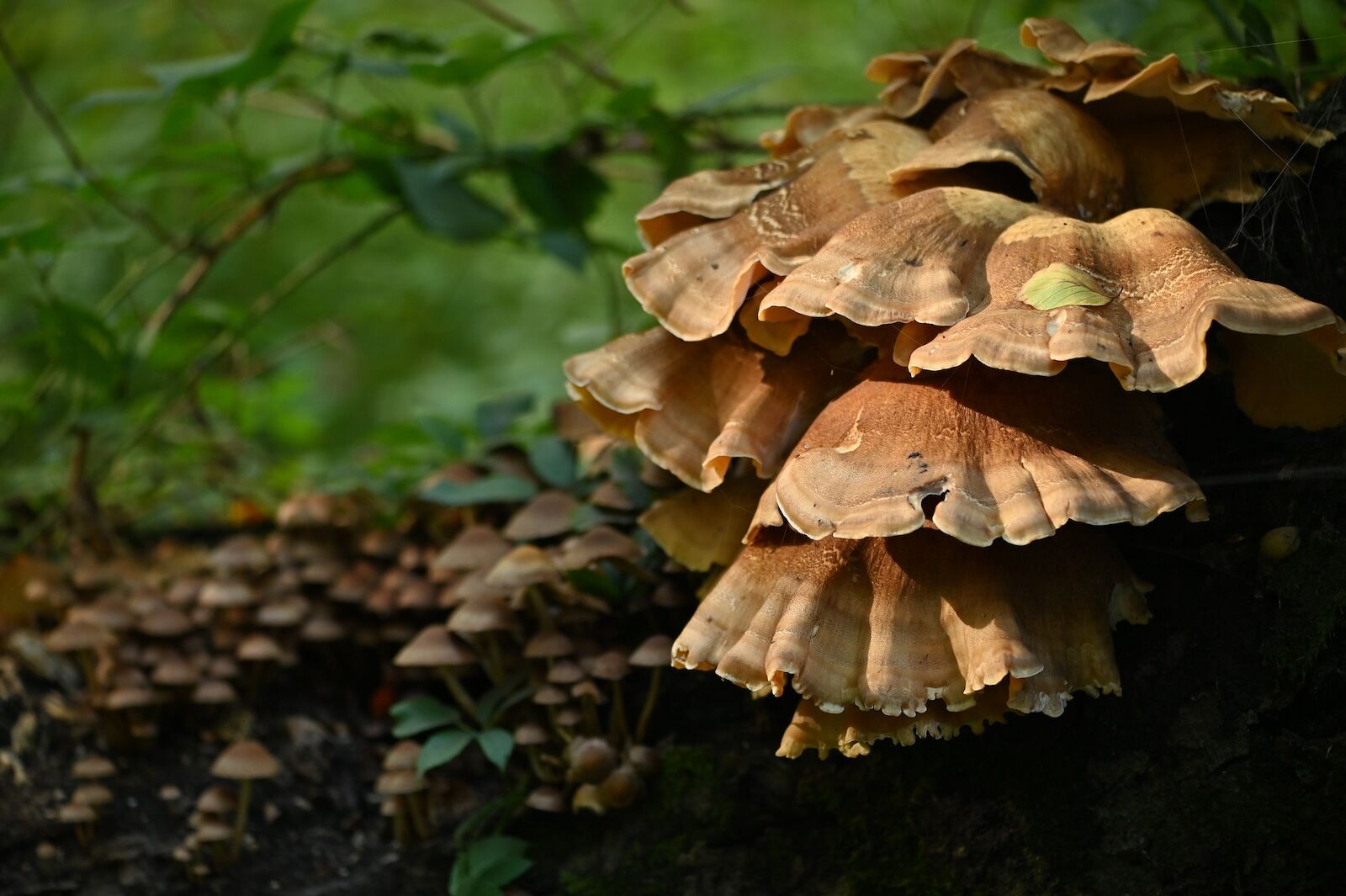
Photo: Zsolyomi/Shutterstock
The warmer southern climate means mushroom species can be reliably found throughout the year, making the South the perfect region for foraging when most of the rest of the country is covered in snow. In the spring, there are morels. The summer months see chanterelles, black trumpet, boletes, chicken of the woods, and black staining polypore. In the fall, Berkeley’s polypore, hen of the woods, oyster mushrooms, lion’s mane, and wood blewit are present. Then in the winter, there are oyster mushrooms and enoki.
North
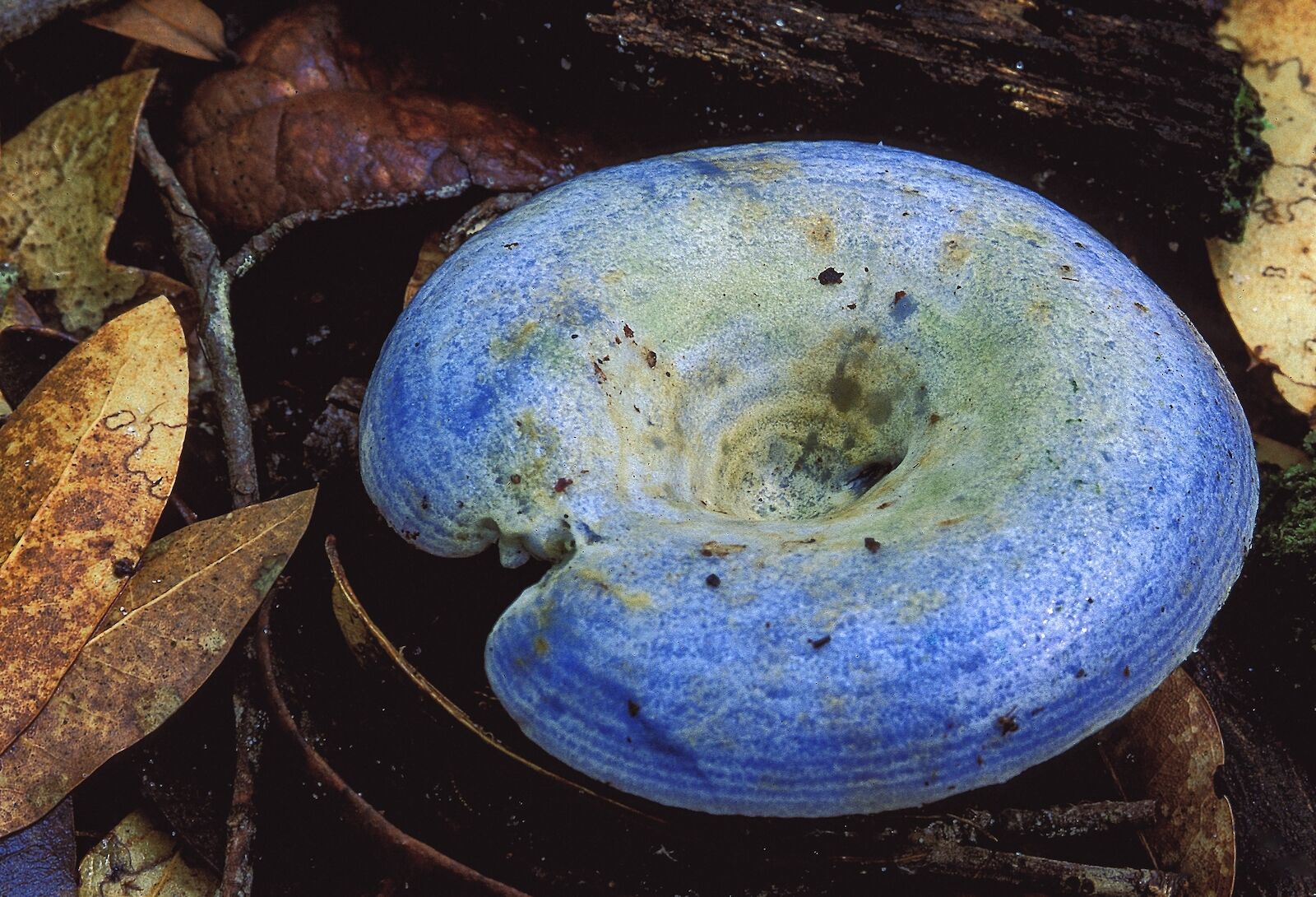
Photo: Donna Bollenbach/Shutterstock
This region of the country can thank its diverse geography for its array of wide ranging mushrooms. Between its variety of forests, wetlands, prairies, bluffs, and coastlines, there are plenty of spaces prime for mushroom growth. Mariah Rogers, Secretary of the Wisconsin Mycological Society, told Matador Network, “there are five categories of most exciting mushrooms to find in Wisconsin: delicious edible mushrooms, medically interesting mushrooms, startlingly beautiful mushrooms, ecologically key mushrooms, and rare finds.”
She singles out the blue milkcap as one of the most distinct and exciting mushrooms to hunt in the area. True to their name, these mushrooms are actually blue. “When some people find them,” she says, “they think they are being pranked.” She also calls attention to the Resupinatus dealbatus, a rare fan-shaped mushroom on wood, with gills. Though uncommon to spot one, it’s quite a special experience when you do.